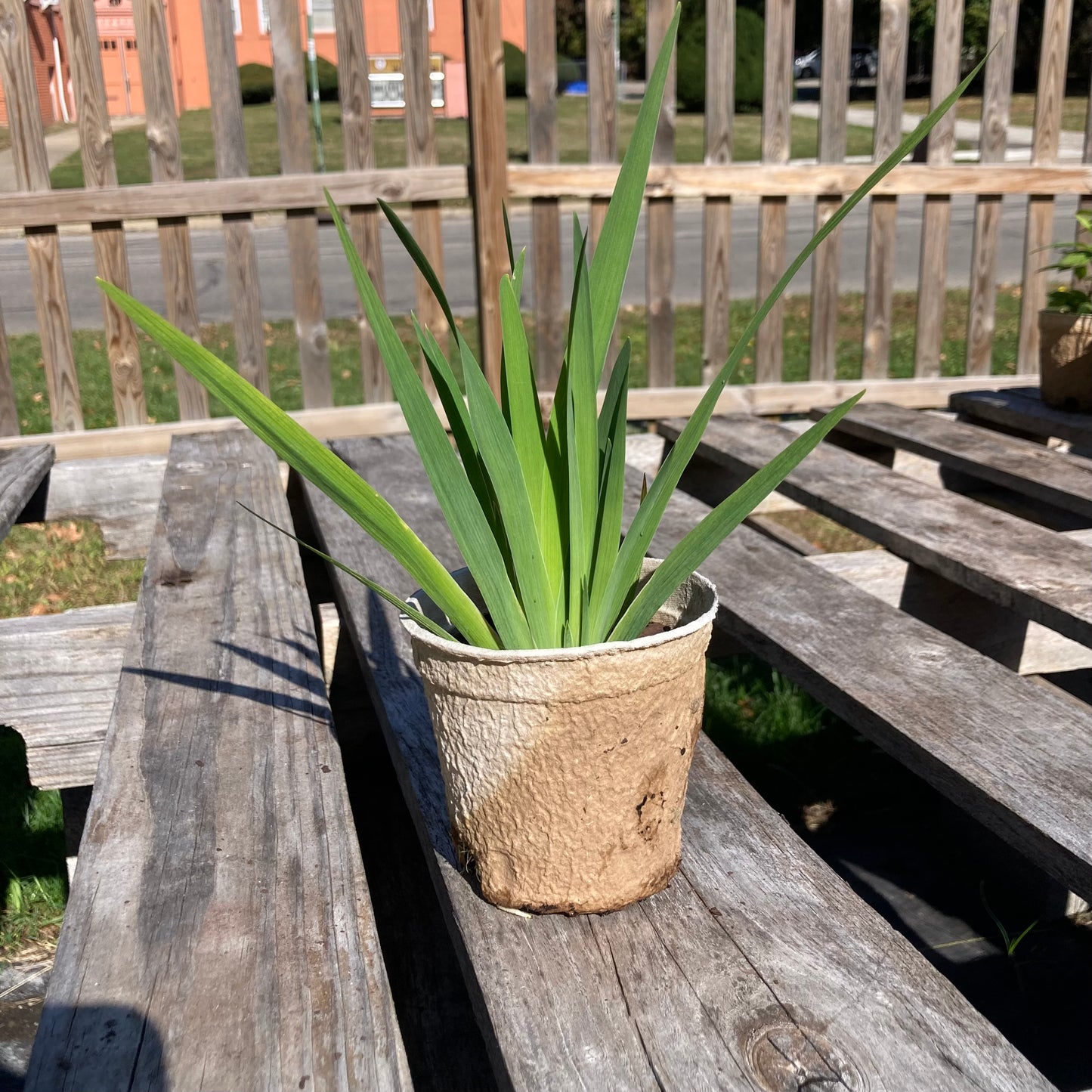Northern blue flag iris
Iris versicolor
Iris versicolor
87 remaining
Couldn't load pickup availability
Sun/shade: Full sun to part shade
Soil moisture: Medium to wet
Height: 3'
Flowering period: June
Deer resistance: High
In May and June, northern blue flag iris produces impossibly ornate blooms patterned in blue and yellow. Pollinators find the color combination to be as striking as we do, and they follow the yellow markings like paths that lead to nectar and pollen. Bumble bees are the plant’s main pollinator, and due to the flowers’ early bloom, many of these bees are queens foraging to feed their first offspring.
Northern blue flag iris is a wetland plant, occurring in swamps, marshes, and along the margins of water bodies. In these places it typically occupies a zone that is too wet for grasses but not quite wet enough for cattails. In the garden, the plant likes full sun to part shade and soils of wet to moderately wet moisture. If grown in average moisture, which is typical of most yards, this iris will do fine as long as it gets watered during summer dry spells. Northern blue flag iris is so water tolerant that it can be grown in continuously standing water up to a depth of about 4”. This makes it the perfect plant for water gardens, pond edges, and wet parts of the yard that are difficult to vegetate.
Spreading slowly via rhizomes, northern blue flag iris is not an aggressive plant, but over time it will form a patch. The plant’s tall, linear leaves arise from its base and make a nice textural contrast with the foliage of other early season plants. For a lovely springtime trio, plant northern blue flag iris with golden alexander and smooth penstemon.
In the Great Lakes region, northern blue flag iris’s range is a fascinating reflection of the area’s glacial history. The plant’s seeds float and are dispersed by water, often settling at the edges of lakes and wetlands. Some present-day populations of northern blue flag iris actually occur along what were once the shorelines of ancient glacial lakes. As the glaciers receded at the end of the last ice age, their meltwaters pooled, forming the precursors of the modern great lakes. Northern blue flag irises grew along the lake margins and their descendants still grow in some of these same locations, even though the lake boundaries have shifted considerably in the past 10-13,000 years.
Photo by Ashley Keesling.



